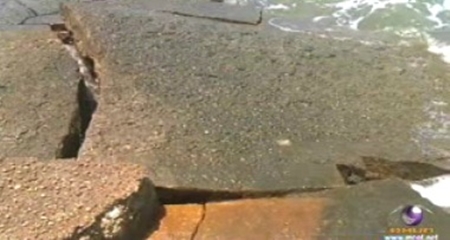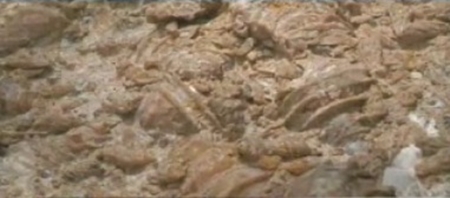Named “The 75 million year old shell cemetery”, this mollusk fossil site, one of the main tourist attractions in the Andaman coastal province of Krabi, is now facing erosion from strong currents, particularly during the monsoon season.
The flat platform of shell fossils is the remnant of what was once a freshwater swamp, abundant with shells, mostly pond snails. The weather and geological change caused seawater to flood to the inland area, leading to a limestone build-up which over millions of years formed the layers of a unique fossil deposit.

The shell fossil ‘cemetery’s’ geologic age is around 20-40 million years and it is one of the world’s three oldest known shell fossil sites.
As time goes by, to preserve the 40 centimetre thick fossil layer on the beach is a challenge to fight against the power of nature. Strong waves have eroded the fossil base and caused a burrow or eroded tunnels under the fossil platform.

The head of the shell cemetery national park protection unit said after the 2004 tsunami, more cracks appeared and five-metre wide fossil plates broke and collapsed into the sea.
Park rangers sealed the hole with rock and cement grouting in an attempt to save the shell fossil however, the man-made shield is has been seriously damaged by the waves in the monsoon season.
“At low tide, we made a wave breaker, like a wall. It worked temporarily. Finally, it cannot resist the power of the waves,” said Komate Plodkhao, head of the national park protection unit.
The local community is worried about the problem and wants agencies concerned to find a permanent solution to preserve the shell cemetery, a popular tourist destination.




